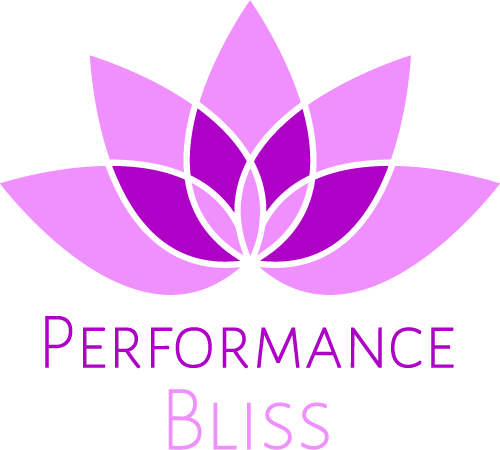Employee reviews have long been considered a necessary, albeit dreaded, aspect of the workplace. Many employees view them as a formality, while managers often struggle with delivering feedback in a way that feels constructive rather than punitive. Yet, when done right, employee reviews offer more than just an assessment of past performance—they provide a valuable opportunity for growth.
By framing criticism as a tool for development and focusing on actionable feedback, employee reviews can become a powerful motivator, guiding employees toward higher performance and professional fulfillment. In this article, we’ll explore how organizations can transform reviews from a source of stress into an opportunity for growth, highlighting the importance of feedback and how platforms like Performance Bliss facilitate ongoing development.
✅ Explore In-Depth: The Ultimate Guide to Developer Performance Reviews
The Purpose of Employee Reviews: Beyond Evaluation
The fundamental goal of employee reviews is to evaluate past performance, but they can offer so much more. When designed thoughtfully, these reviews are a critical touchpoint for communication, alignment, and career development. They provide managers and employees alike the opportunity to reflect on achievements, areas for improvement, and set clear goals for the future.
Rather than merely assessing what went wrong, employee reviews can shift focus to what can be done to improve and grow. This shift helps employees understand that criticism is not personal—it’s a stepping stone toward better performance. Managers play a crucial role in creating this mindset, ensuring that reviews emphasize progress and opportunity.
Tools like Performance Bliss make this process more manageable, offering structured ways to track and document performance over time. Rather than focusing on isolated incidents, managers can use this data to highlight trends and help employees see the big picture, aligning criticism with long-term development goals.
How Constructive Feedback Drives Employee Growth
Feedback is the most powerful tool in employee development. However, it’s not just the delivery of feedback that matters—it’s the way it is received and internalized by employees. To turn criticism into an opportunity for growth, managers need to focus on providing constructive feedback that encourages reflection and improvement.
Constructive feedback focuses on specific behaviors or outcomes, rather than personal traits. Instead of saying, “You’re not a good communicator,” constructive criticism might look like, “I’ve noticed that in team meetings, some of your points are unclear. Let’s work on making your ideas more concise.” This feedback is clear, actionable, and focuses on improvement.
With platforms like Performance Bliss, managers can document feedback throughout the year, ensuring that employee reviews are comprehensive and not reliant on memory. The software allows managers to track performance in real time, offering timely and specific feedback that makes reviews more meaningful.
Framing Criticism as a Development Opportunity in Employee Reviews
One of the most effective ways to turn criticism into a growth opportunity is by framing it as a part of the development process. During employee reviews, managers should emphasize that feedback is meant to help employees improve, learn new skills, and move forward in their careers. This creates an environment where criticism is seen not as a reflection of failure, but as a roadmap for growth.
To do this successfully, managers should:
Be clear about expectations: Employees need to understand what success looks like, both for their role and for specific tasks. Clear expectations make feedback more relevant and easier to act upon.
- Offer solutions, not just criticism: Criticism without guidance on how to improve can leave employees feeling demotivated. Managers should pair criticism with suggestions for how to address the issue. For example, “I’ve noticed your reports tend to miss key data. Let’s work together to create a checklist you can use to ensure all important points are covered.”
- Create a collaborative development plan: Employee reviews should be a two-way conversation. After receiving feedback, employees should be encouraged to take ownership of their development, with the support of their manager. This could involve setting specific goals, identifying training opportunities, or finding a mentor within the organization.
Performance Bliss offers features that make this process even easier, allowing managers and employees to create and track personalized development plans directly within the platform. This ensures that feedback is not only delivered but also acted upon, with clear steps toward improvement.
Employee Reviews as a Tool for Continuous Improvement
One of the key challenges with traditional employee reviews is that they tend to be annual or semi-annual events. Feedback is given in large chunks, often leaving employees feeling overwhelmed by the amount of information or the distance between the review and the actual events being discussed. However, feedback is far more effective when it’s ongoing, and employee reviews can play an important role in fostering continuous improvement when paired with regular check-ins.
By utilizing platforms like Performance Bliss, managers can provide ongoing feedback in real-time, allowing for continuous development rather than waiting until a formal review cycle. This regular feedback loop ensures that employees can address challenges as they arise, making reviews more about long-term growth and less about past shortcomings.
Incorporating frequent check-ins into the employee review process also allows for course correction before problems escalate. Instead of waiting for a major issue to arise, managers can provide smaller, more manageable pieces of feedback, which employees can immediately act on. This prevents mistakes from repeating and fosters a culture of continuous learning and adaptation.
Building Trust and Engagement Through Employee Reviews
An often-overlooked aspect of employee reviews is the opportunity to build trust between employees and managers. When done thoughtfully, reviews can foster open communication, strengthen relationships, and increase employee engagement. Trust is essential for employees to feel comfortable receiving and acting on feedback, and it’s something that is built over time through consistency and transparency.
Here’s how managers can use employee reviews to build trust:
- Be honest and direct: Employees appreciate honesty, even when the feedback may be difficult to hear. Sugarcoating or avoiding difficult topics can lead to misunderstandings and disengagement. However, honesty should always be paired with empathy and support.
- Celebrate successes: It’s important to acknowledge where employees are excelling, not just where they need improvement. Recognizing strengths in employee reviews helps balance the conversation and boosts morale.
- Follow through on development plans: Employees need to see that the feedback they receive will lead to tangible support for their development. Managers should follow through on development plans, ensuring that employees have the resources and guidance they need to improve.
Performance Bliss supports this trust-building process by providing tools that make reviews more transparent and actionable. With clear documentation of goals, feedback, and progress, employees are more likely to feel that reviews are fair, balanced, and aimed at helping them grow.
How Employee Reviews Support Long-Term Career Growth
Ultimately, employee reviews are most effective when they are focused on long-term career growth. Employees should leave reviews with a clear sense of their strengths, areas for development, and the path forward. This forward-looking perspective helps employees understand that reviews are not just about where they have been, but where they are headed.
When managers take the time to align feedback with career development, employees are more motivated to take ownership of their growth. Managers can support this process by identifying opportunities for skill development, leadership training, or even lateral moves within the company that align with the employee’s career goals.
Performance Bliss is designed to make these career conversations easier by tracking performance trends, documenting achievements, and linking feedback to larger career objectives. This ensures that both managers and employees have a clear roadmap for success, making criticism not just a reflection on the past, but a guide to future growth.
Conclusion: Transforming Criticism Into Growth Opportunities
While employee reviews have traditionally been seen as stressful or uncomfortable, they have the potential to become one of the most valuable tools for employee development. By framing criticism as an opportunity for growth, providing constructive feedback, and focusing on long-term career goals, managers can transform reviews from dreaded events into moments of empowerment and motivation.
With tools like Performance Bliss, organizations can take a data-driven approach to feedback, ensuring that reviews are not only fair and transparent but also actionable. By leveraging these tools, companies can foster a culture of continuous improvement, helping employees turn criticism into opportunities for growth and long-term success.
In the end, the goal of employee reviews should always be to support development. When done right, they motivate employees to reach their full potential, improve team dynamics, and ultimately contribute to the overall success of the organization.


